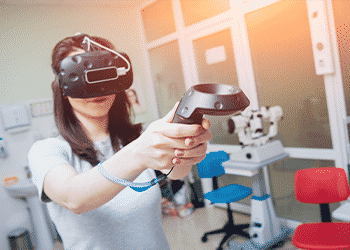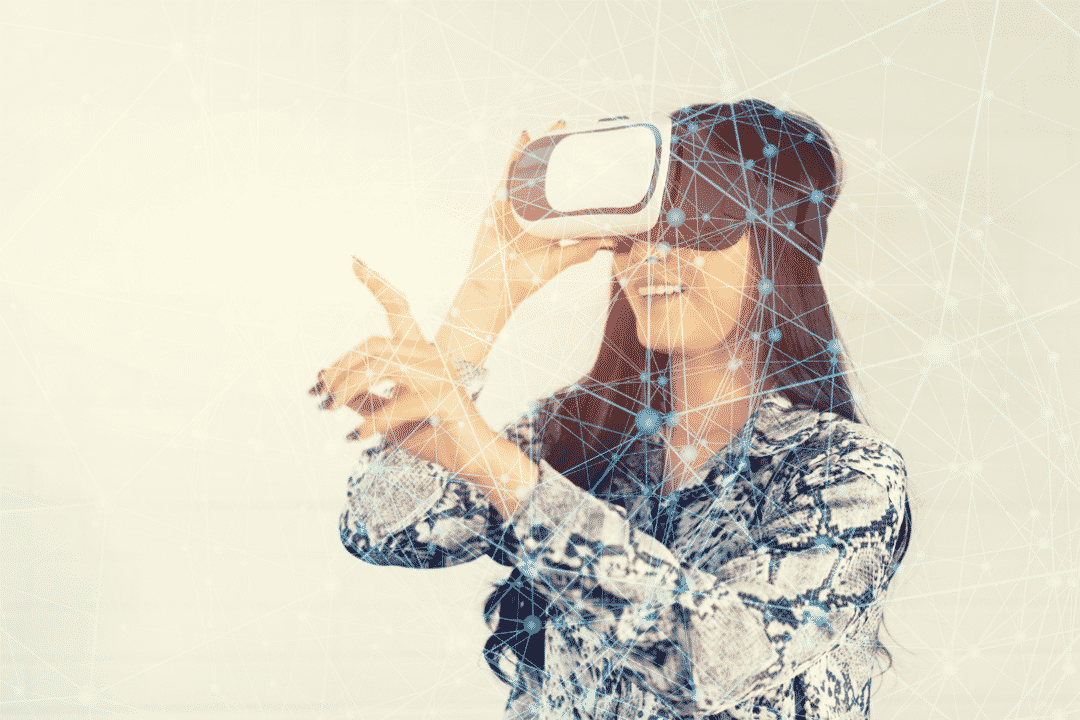Perhaps unsurprisingly, facilities of higher education are often at the forefront of technological advancement when it comes to learning. Think of such commonplace classroom items as Scantron sheets, invented in 1972, or even the blackboard, introduced by a Scottish teacher in 1801.
In fact, educational facilities even adopted early forms of e-learning, with the New Jersey Institute of Technology providing all incoming freshmen with a personal computer in 1983 and the University of Phoenix, now a leader in online learning, offering educational programs through the newly founded World Wide Web in 1991.
As technology improves, colleges and universities are often eager to offer new avenues of learning to their students. But these advancements can be used just as easily for training staff and employees within higher education as well.
Technology Perfect for Training
It is hard to completely predict what new learning tools and techniques will be introduced — and fully adopted — each year, but here are a few that have gained popularity for different uses and have many potential future uses regarding employee training.
Virtual Reality
No matter your personal experience with virtual reality, typically known simply as VR, you are probably somewhat familiar with the term. Invented in a primitive form for multimedia viewing in 1957 before being first adapted for training — for Air Force flight simulators — in 1966, virtual reality uses computer technology to create a simulated environment. It’s most common use is in gaming but has practical applications for employee training as well.

In the most general sense, VR headsets produce an entirely computer-generated reality, immersing the user in an alternate world. One example of utilizing VR in the workplace might be when training employees on finding defects in required PPE. In a virtual setting, you don’t need to keep faulty equipment around, but employees can still gain that “hands-on” experience in a safer way.
Augmented Reality
While virtual reality entirely replaces your vision and environment, augmented reality, or AR, adds to it, enhancing a user’s real-life experiences. AR uses a smartphone or other connected device, to overlay virtual pictures or characters onto your surroundings.
In a training environment, an augmented overlay could be used in a laboratory for users to walk around and identify procedures or potential safety hazards without having to actually put themselves or others in danger.
Of course, augmented reality and virtual reality are similar, and can in fact be used in tandem, but, at least for now, VR requires potentially costly gear, whereas AR can generally be introduced to learners in a more affordable way.
Depth Mapping
One step beyond augmented reality is something known as depth mapping, which has nearly endless possibilities, both in training and in the everyday world. Simply put, with depth mapping, a camera takes in images or a video feed, estimates the distance of area between objects and creates a map showing distances of space. Of course, the actual technology is more complicated than that.
Depth mapping is ideal for learning situations that require much more visual stimulation and different views. For instance, imagine a grounds crew is trying to teach new employees how to diagnose a problem with the engine of a piece of equipment. Rather than keeping a broken or dead engine on hand, the team could use depth mapping to scan a real engine and truly immerse the learners in the machinery.
Looking for more online safety training courses?
Learners Will Expect More Personalization
One thing likely to follow the emergence of advanced technology is something called mass personalization. In recent years, both learners and instructors have become less willing to adhere to the “one size fits all” method of training. Instead, customized learning experiences are in demand, which makes even more sense when you consider the fact that more than half of Americans in 2020 used a virtual assistant, including smartphones, smartwatches and voice-activated speakers (up from nearly 1 in 4 in 2019).
In the future, self-driven experiences will be key in all types of learning. This can currently be seen in adaptive learning, which is an educational experience that adjusts to a user’s interactions in real-time to provide individual support. Based on the answer or option the user selects, the content shown next may differ from that of someone else taking the course. This helps create a certain level of personalized learning, increasing engagement and retention.
As technology advances further, so too will the degree to which users look for personalized learning techniques. For instance, a training platform could use real-time data to identify situations each learner may face on a particular day and suggest relevant courses to take or information to review at that time.

Training is About More Than Technology
Of course, these technology applications will not be practical or viable for every learning experience, but when reviewing your employee training program, you must at the very least keep these types of things in mind. After all, you may find them usable in the future and if your training platform is not flexible or does not attempt to make advancements, you and your training will stay stagnant.
Also keep in mind that, no matter how flashy or advanced a training course may seem, it must still be truly effective for the learner. The most effective online training courses are a perfect marriage of three key elements: meticulous research, intentional design and engaging graphics.
When you think about those elements in the context of online training, it makes sense that having only two of the three would create an incomplete experience. But it isn’t quite as simple as needing just “research, design and graphics.” Several things go into each of those elements to create a strong and successful training course.
Research
All training content should be created to be relevant, but perhaps even more than other types of training, safety training requires the utmost accuracy. After all, it doesn’t do much good to be training employees over outdated safety regulations or incorrect procedures.
Meticulous research must be done into general regulations, such as from OSHA or the Department of Transportation, industry-specific regulations and any applicable industry best practices. An outside subject matter expert should also be consulted, especially when it comes to technical aspects to ensure full understanding, which makes it easier to create complete and correct course content.
Design
When we use the term “design” here, we are referring to instructional design. In the case of online training, the instructional design often includes learning objectives, competencies or quiz questions, and information on what type of visuals to use when building the course.
The instructional design phase of an online training course is crucial, but often includes elements the learner may not even notice. That is not a bad thing — you want them remembering the content itself, while the design elements simply act as a vehicle for best delivering those important messages.
Graphics
In order for online training — or any training for that matter — to be truly effective, it must engage the learner, making it more likely they will remember the material. One big factor in being engaging is introducing the content with relatable and recognizable situations.
For instance, your employer may want you to complete a training course on ergonomics. If so, it would be far more effective for you to be assigned a course where you see things like how to properly sit at a desk, rather than an extremely specialized ergonomics course, like those created for employees in warehouses or industrial facilities, which may demonstrate things like proper lifting.
Don’t Wait to Upgrade Your Training
While we expect to see widespread adoption of each of these trends, it is possible they do not all perfectly align with your needs. We recommend reviewing what would work best for you, your employees and your company to decide how to proceed in the new year.
For more than 35 years, SafetySkills has helped train employees around the world on both workplace and off-the-job hazards, along with numerous HR-compliant topics and valuable soft skills. All our training can be individually assigned so you can create a custom training program.
Contact SafetySkills today to learn more and get a head start on your workplace training as we head toward the new year.


